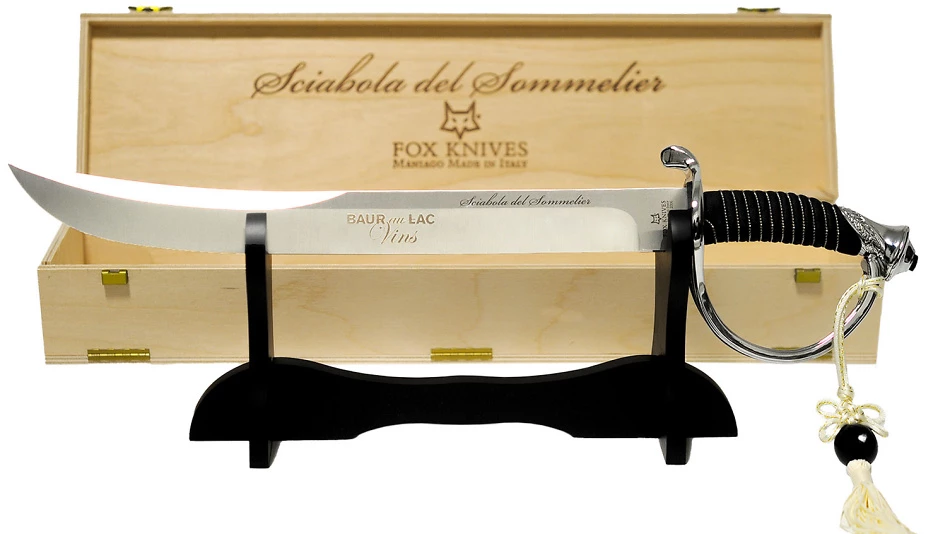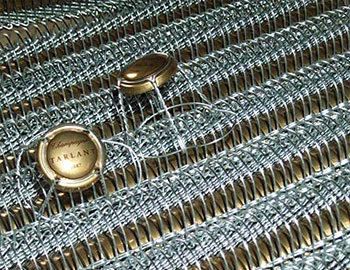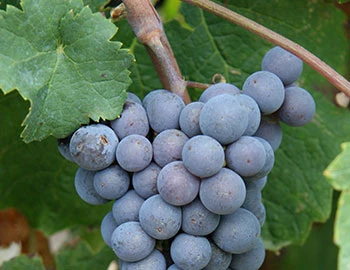
Tarlant La Vigne d'Or Brut nature 2006
AOC Champagne, (Pinot Meunier), 750 ml

| Grape variety: | Pinot meunier |
| Producer: | Tarlant |
| Origin: | France / Champagne |
Celebrate the Art of Sabring!

With its elegant design, this champagne sabre is not only an impressive eye-catcher at any celebration and an indispensable tool for stylish sabering, but also the perfect gift for all passionate sparkling wine lovers.
Attributes
| Origin: | France / Champagne |
| Grape variety: | Pinot meunier |
| Ripening potential: | 1 to 5 years |
| Drinking temperature: | 8 to 10 °C |
| Vinification: | bottle fermentation, fermentation in wooden barrel |
| Maturation: | on the yeast, bâtonnage |
| Maturation duration: | 180 months |
| Volume: | 12.0 % |
| Note: | Contains sulphites |
Tarlant
The Tarlant family can look back on a long family history, one that can be traced back to 1687. For almost three and a half centuries they have devoted themselves to viticulture in the Marne Valley in the Champagne region. But it was only after World War I that the first hugely successful Champagne Tarlant was created. Today, brothers Jean-Mary and Benoît operate the family-owned company.
With a total of 14 hectares spread over 55 plots, the winery is very small compared to other Champagne houses. Tarlant is a real insider tip, featured on the wine list of some of the world's most prestigious restaurants, and it was not easy for Baur au Lac Vins to come by a few bottles. These sparkling wines are unusual, but all the more fascinating for it.
Vigne d'Antan, Vigne d'Or and La Vigne Royale belong to the winery's limited premium range. The grapes each come from a particular location. The Chardonnay vines for the Vigne d'Antan are authentic, meaning they are ungrafted. The Vigne d'Or is made from 100% Pinot Meunier, which is really unusual in the Champagne region, and can be described as a rarity. La Vigne Royale is a pure Pinot Noir.
The hand-picked grapes are gently pressed in the traditional basket press. The fermentation and maturation of the basic wines are carried out in barrels. Tarlant attaches great importance to a particularly long bottle ageing on the yeast, so the flavours can fully develop. This can easily take seven to ten years. These Champagne wines are always dry and receive little or no dosage.
Even for the Champagne connoisseur, these hidden gems will make for a most unusual discovery!

Pinot meunier
Freshness boost for champagnes
Many fine white hairs on the underside of the leaves give this red grape its name. "Meunier" translates to miller, an allusion to the impression that the plant has been dusted with freshly ground flour. Its main habitat is in Champagne. Alongside Pinot noir and Chardonnay, it forms the third component of the classic champagne cuvée. It contributes fresh acidity and youthful fruit to the sparkling wines. It is only very rarely into champagne by itself, but the few examples are worth tasting. In German, Pinot Meunier is also known as Müllerrebe or misleadingly as Schwarzriesling (black Riesling).

France
France – Philosophy in a bottle
According to French philosophy, wine should be an expression of the soil and climate. They use the word “terroir” to describe this. Terroir makes every wine different, and many especially good. French wine is regarded worldwide as an expression of cultural perfection. The French believe that humans are responsible for the quality of the berries, the vine variety for their character, and nature for the quantity. This philosophy can be expressed succinctly as: “the truth is the vineyard, not the man.”


